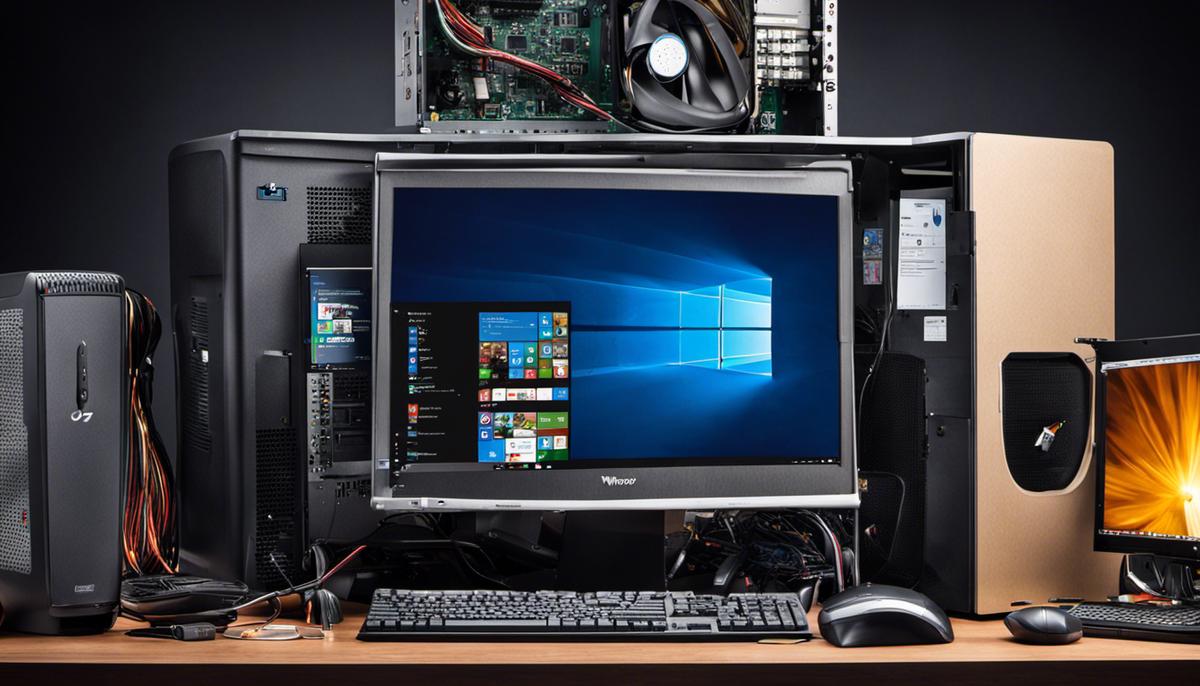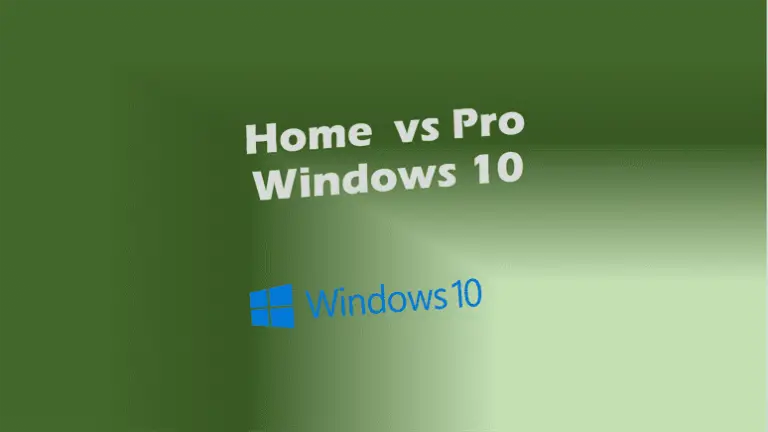Simple Guide to Installing Windows 7
Follow our easy steps to install Windows 7 and enjoy a seamless computing experience. Start your installation today!
As the digital age advances, it becomes necessary to remain conversant with the processes that facilitate the efficient use of your computer, one crucial process being the installation of an operating system.
This paper provides a comprehensive guide on how to install Windows 7, a widely used operating system from the Microsoft family. First, we discuss the system requirements for Windows 7, which offer valuable insights into the hardware and software requirements your computer must adhere to for a successful installation and operation.
Following this, the focus shifts to a preparatory phase where crucial activities, such as file backup and updating existing software, are highlighted.
Lastly, we delve into an illustrative step-by-step process on how to install Windows 7, right from inserting the installation disc to fully setting up your system with personalized settings.
System Requirements for Windows 7
System Requirements Checklist for Windows 7 Installation
Before diving into the specifics of installing Windows 7, which is – despite its age – still a staple in many organizational infrastructures and home systems, it’s crucial to understand the system requirements. Doing so will ensure a hassle-free installation process, and more importantly, an optimal running experience post-installation. Let’s delve into what you’ll need to get Windows 7 up and running.
The most fundamental aspect deals with the processor. A 1 GHz or faster processor is required, and this applies both to 32 and 64-bit systems. With processors getting faster and cheaper with every passing moment in the tech world, meeting this requirement shouldn’t be a stumbling block.
The second factor to consider is the system memory, or RAM. In an era rife with multi-tasking, the RAM is vital for running multiple applications concurrently without a hitch. For a 32-bit system, the requirement is 1GB of RAM, and for a 64-bit system, the stakes are doubled – demanding 2GB of RAM.
Next up is the graphics interface. For a Windows 7 machine, it’s necessary to have a DirectX 9 compatible graphics processor. This system also should have a Windows Display Driver Model (WDDM) driver of 1.0 or higher. Such compatibility will ensure you can run multimedia rich apps and websites effortlessly.
Let’s address the issue of space. Computers are asked to store more data than ever before, and Windows 7 needs room to breathe too. A 32-bit system requires 16GB of available hard drive space, whereas a 64-bit system needs 20GB.
These figures may seem a tad on the high side, bucking the trend of lightweight operating systems. Yet, when you consider the complete suite of features Windows 7 brings to the table, the compromise on space is well worth it.
Last but not least, you will require a DVD-R/W drive for installing the operating system from a disc and solid, reliable Internet access to download necessary updates and additional features. While these are pretty standard requirements, neglecting to ensure their availability could derail the installation process.
These requirements might seem a little daunting for the uninitiated, but when you breakdown the process, it’s just about ticking the boxes and making sure your tech is up to par.
Let’s put the manual checklists and tedious ticking behind us by venturing into the world of automation. Use the Windows 7 Upgrade Advisor tool. This nifty little app will scan your hardware, devices, and programs for compatibility issues, providing you a comprehensive report and recommendations on how to proceed next.
As always, the world of technology provides solutions intechnicolor. And with the right knowledge and tools at your disposal, installing Windows 7 can be as smooth as a swipe on your high-definition touch screen.

Preparing for the Installation – Install Windows 7
Cracking the Installation Process for Windows 7: A Rational Look
Embarking on a Windows 7 installation process without understanding the perquisites and steps can become a frustration-filled endeavor. It’s crucial to first ensure the system meets the already discussed requirements, including processor specifications, memory, graphics, hard drive space, and a fully functioning DVD-R/W drive, along with an unwavering internet connection. The Windows 7 Upgrade Advisor tool, no doubt, is grand for this. Here’s taking that conversation forward.
First off, backing up the current data is an absolute must for safeguarding against accidental loss during the installation process. Be it important work documents or those cherished family photos, backing them up to an external hard drive or cloud-based storage service will save a lot of tears. Good options include an external hard disk, a networked computer, or in cloud storage such as Google Drive.
Remember, the operating system installation process gets a lot simpler if you have an installation disc. If not already in possession, it would be shrewd to purchase or create a bootable USB or DVD. For the not-so-tech-savvy, Microsoft offers a convenient tool to make this process hassle-free.
Next, all necessary software and drivers must be assembled. This includes finding and downloading the latest versions of all critical system drivers. These small pieces of software enable the communication between the OS and the hardware devices. It wouldn’t be wrong to call them the ‘interpreters’ of the system!
An extremely crucial factor to acknowledge is the compatibility of applications. Scrutinize all current applications closely to ensure they have Windows 7 compatible versions. Not to spread fear, but some older programs just fail to run on newer systems. Being aware of this beforehand saves time and eases the transition.
Being a tech enthusiast, you know it’s wise to disconnect all non-essential peripherals during the installation process. It’s paramount to keep the mouse, keyboard, and monitor – essentially the basics- but printers, USB devices, and secondary monitors can be plugged out. This ensures a smooth installation and keeps rogue drivers from causing mayhem.
Installation of Windows 7 is now just a matter of following on-screen instructions diligently. Once the series of dropdown menus and checkboxes are navigated and the user agreement approved, the system should take over, and circle back once the process is complete.
After installation, there’s a final sprint of installing the previously downloaded drivers, updating the operating system, and installing antivirus and other necessary applications.
There you have it, a logical, sensible guide to installing Windows 7, striding towards an effortless experience. Happy tech times await your tech enthusiast spirit!

Windows 7 Installation Process
After a thorough understanding of the system requirements for a Windows 7 installation, it’s necessary to dive into the actual installation process. Moving forward, a series of methodical steps need to be followed to successfully install this OS.
As a first rule of thumb, backing up crucial data is paramount. Don’t gamble with your precious files and documents. This precautionary step ensures your data’s safety, even if the installation process encounters unforeseen hurdles.
Next, create a bootable USB or DVD to begin installation. A bootable USB drive with a minimum of 4GB storage or a burnable DVD will suffice. Use the Microsoft USB/DVD Download Tool to transfer the Windows 7 ISO file onto your bootable device. Remember, your computer’s BIOS settings must be set to boot from the device you have chosen.
When preparing software and drivers for assembly, it’s vital to ensure that they are compatible, updated and ready for installation. Prepare a list of necessary software and drivers that the system primarily uses, then gradually download them from trusted developer websites. Keep these downloaded files on a separate storage device for easy accessibility post-installation.
Incompatible applications can cause inconsistencies and instability in your system. Run the Windows 7 Upgrade Advisor tool to analyze potential compatibility issues within the hardware, devices, and installed programs. Make sure to resolve these issues before the installation to ensure a smooth transition.
Disconnecting non-essential peripherals during installation will eliminate any possible hardware interruptions. Peripherals like USB devices, printers, and other external hardware might interfere with the installation process. Simply plug them back in after navigating and successfully completing the setup processes.
During the installation process, follow all on-screen instructions religiously. This step includes choosing your language preference, agreeing to license terms, and partitioning your drives. Select the ‘upgrade’ option if you’re installing Windows 7 as an upgrade, or choose ‘custom’ for a new installation.
After installing Windows 7, it’s equally important to update your newly installed operating system. This ensures protection against any potential threats and boosts performance handling.
Install the previously downloaded drivers at this point to ensure that your hardware functions properly. Regularly check for future updates to maintain optimal performance.
To the newbie tech enthusiast, dealing with an OS installation could be intimidating, but to the seasoned gurus, it’s a call answered with gusto.
Whether for personal use or a part of work, following these instructions can make the Windows 7 installation process effortlessly simple and efficient.
Commit these steps to memory, and you’ll be ready to grasp the challenges that come with tech mastery.

(Install Windows 7)
This journey through the system requirements, preparation phase, and installation process of Windows 7 not only equips you with the knowledge to confidently install the operating system but also aids in understanding the importance of each stage and its implications on the functionality of your computer system.
It’s evident that a detailed approach to this process can empower you to navigate potential challenges and ensure the stability and reliability of your system post-installation.
Knowledge is power, and through understanding this installation process, you further solidify your ability to be self-reliant in managing your technology.
Remember that each stage is vital, from meeting system requirements, adequate preparation, to eventually installing and setting up Windows 7 on your computer.
Related Posts:
Further Information:






